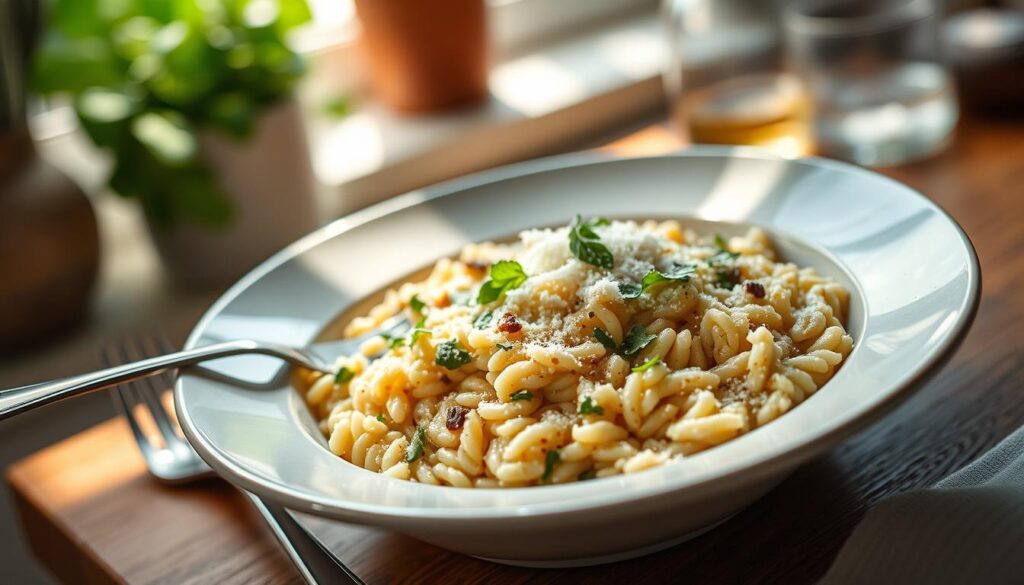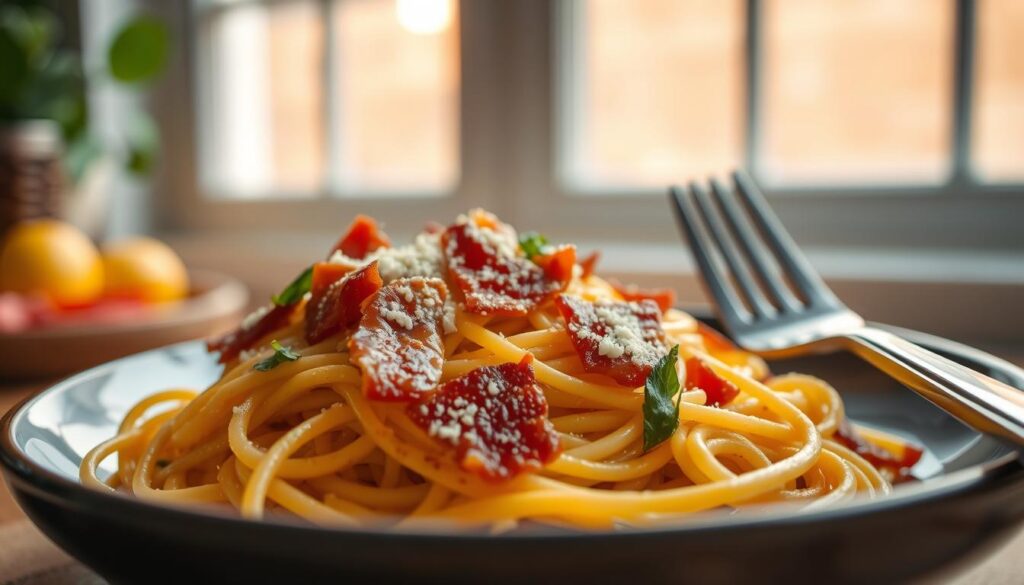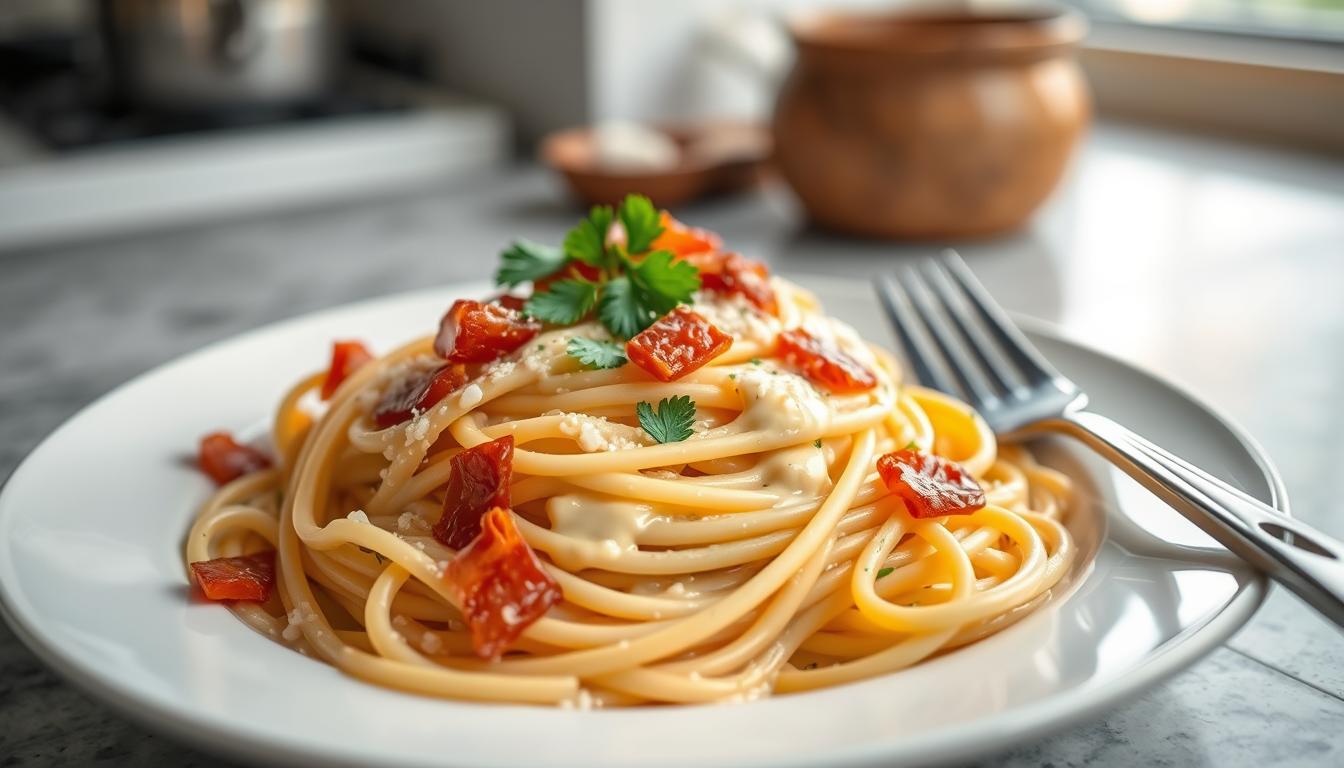Italian cuisine is beloved worldwide for its rich flavors and delightful textures. When we think of famous Italian dishes, three staples often come to mind: pasta, pizza, and gelato. Each of these dishes not only holds a significant place in Italy’s culinary tradition but also offers a glimpse into the culture and history of the country. Pasta, with its many forms and sauces, is integral to Italian dining. Pizza, known for its diverse toppings and styles, represents Italian creativity and regional pride. Lastly, gelato, the creamy frozen treat, delights dessert lovers with its unique flavors and smooth texture. As we explore the essence of these iconic dishes, it becomes evident that they have transcended borders and influenced global cuisine, capturing the hearts (and appetites) of many.
Key Takeaways
- Italian cuisine is known for its rich flavors and variety.
- Pasta is a versatile dish central to Italian dining.
- Pizza showcases regional creativity and diversity.
- Gelato offers unique flavors, distinct from traditional ice cream.
- These dishes have gained international popularity.
Introduction to Italian Cuisine
Italy is home to a rich tapestry of culinary traditions that vary dramatically from region to region. Northern Italy boasts creamy risottos that reflect the agricultural staples of the area, while the southern regions favor dishes adorned with vibrant olive oil. These regional differences showcase how geography and climate significantly shape Italian food.
Authentic Italian cuisine places a strong emphasis on fresh, quality ingredients. Locally sourced produce, meats, and grains contribute to the distinct flavors that define diverse dishes. Traditional cooking methods preserve the integrity of these ingredients, ensuring that each meal conveys the essence of Italian culinary arts.
Food plays an essential role in Italian culture, acting as a centerpiece for gatherings. Family recipes are passed down through generations, representing a living history that celebrates community and shared experiences. To explore more about Italy’s beloved dishes, refer to this article on popular traditional Italian dishes.
This dedication to authentic Italian cuisine has garnered a loyal following worldwide. From lively trattorias in Rome to bustling pizzerias in Naples, the passion for Italian food continues to thrive, enticing food lovers everywhere. As visitors explore the vibrant landscapes and rich flavors of Italy, they encounter the beauty of its culinary heritage, a journey that is as flavorful as the dishes themselves.
The Rich History of Italian Food
The history of Italian cuisine spans centuries, beginning in ancient Rome where culinary practices were influenced by diverse territories. The evolution of Italian food reflects not only regional ingredients but also socio-political changes that shaped the nation. The arrival of spices through Arab trade significantly transformed flavors in Italy, highlighting the dynamic nature of its culinary heritage.
During the Renaissance, the rebirth of arts and culture also had a profound impact on food, promoting a shift toward more refined cooking techniques. This period marked the emergence of celebrated recipes and a growing appreciation for ingredients sourced from local regions. Following the unification of Italy in the 19th century, Italian food began to standardize, yet regional diversity remained a defining characteristic.
The New World introduced previously unknown ingredients such as tomatoes, potatoes, and corn, which became staples in Italian cooking. These changes in agricultural practices contributed to the ongoing Italian food evolution, ensuring that dishes continued to adapt and grow.

Today, Italian cuisine serves as a testament to a rich culinary heritage that honors tradition while embracing innovation. Modern chefs draw inspiration from Italy’s storied past, creating dishes that pay homage to ancient practices, yet incorporate contemporary influences, securing the perpetual evolution of a truly global cuisine.
Pasta: A Staple of Italian Cooking
Pasta, an integral element of Italian cuisine, comes in numerous pasta varieties that reflect the rich regional heritage of Italy. Understanding the different types of pasta provides insight into their cultural significance and the artisan skills that go into producing them. For example, shapes like spaghetti, penne, and ravioli not only serve diverse culinary purposes but also embody the regional traditions from where they originate.
Types of Pasta and Their Significance
The significance of pasta extends beyond mere sustenance, as it often forms the backbone of Italian daily meals. Pasta serves as a canvas for various sauces, vegetables, and proteins, making it a versatile dish suitable for any occasion. Below is a table illustrating some popular pasta varieties along with their unique features and common pairings:
| Pasta Type | Shape | Common Pairings |
|---|---|---|
| Spaghetti | Long, thin strands | Marinara sauce, meatballs |
| Penne | Cylindrical with diagonal ends | Chunky sauces, baked dishes |
| Farfalle | Bow-tie shaped | Salads, cream sauces |
| Ravioli | Filled pasta pockets | Meat, cheese, or vegetables |
| Linguine | Flat and narrow strands | Seafood, oil-based sauces |
Classic Pasta Dishes to Try
When exploring Italian culinary traditions, sampling classic Italian pasta dishes is a must. Iconic options like Spaghetti Carbonara, Lasagna, and Pesto alla Genovese offer a delightful taste of Italy. Each dish has its own origin story and flavor profile, showcasing the regional ingredients that contribute to its distinctive character. Enjoying these meals not only satisfies the palate but also connects diners to the rich history of Italian cooking. For those seeking privacy while browsing recipes, reviewing the cookie policy can provide valuable insights into data management as you explore the magic of pasta.
Pizza: The Iconic Italian Delight
Pizza holds a special place in the world of Italian cuisine. Its journey from a simple flatbread to a beloved dish illustrates the rich history of pizza. Originating in Naples, this culinary delight started as a food for the working class, evolving over time to become a staple enjoyed worldwide. The evolution of pizza includes the creation of the renowned Margherita pizza, which embodies the colors of the Italian flag through its fresh ingredients.
The Origins of Pizza in Italy
The Italian pizza origins trace back to the 18th century in Naples, where it was primarily eaten by the impoverished. These early pizzas were characterized by their simplicity, made with basic ingredients like tomatoes, cheese, and oil. As the dish gained popularity, it transformed not just in Naples but across Italy. Each region added its unique twist, contributing to the fascinating history of pizza.
Popular Types of Italian Pizza
Several styles of pizza have emerged, each with distinct characteristics. Notable types include:
- Neapolitan pizza: Known for its soft and chewy crust, made with flour, water, salt, and yeast.
- Sicilian pizza: Features a thicker crust and is often square-shaped, loaded with toppings.
- Roman pizza: Thin and crispy, this style is typically rectangular and offered in various toppings.
Regional toppings further diversify the range of Italian pizza varieties, showcasing local ingredients and preferences. For instance, arugula and prosciutto are often found on pizzas in northern Italy, whereas spicy salami is favored in the south.
| Type of Pizza | Crust Thickness | Shape | Typical Toppings |
|---|---|---|---|
| Neapolitan | Thin | Round | Tomato, mozzarella, basil |
| Sicilian | Thick | Square | Tomato, onions, anchovies |
| Roman | Thin | Rectangular | Various meats, seasonal vegetables |
Gelato: Italy’s Creamy Treat
Gelato stands apart from traditional ice cream, celebrated for its distinct gelato characteristics. The primary difference lies in its lower fat content, which creates a creamier texture that is less airy than ice cream. This denser consistency allows the rich flavors of gelato to shine through, making it a beloved choice within the realm of Italian desserts. Traditional gelato uses whole milk and less cream, expertly blending ingredients to produce an indulgent treat.
Difference Between Gelato and Ice Cream
Understanding the differences between gelato vs ice cream is essential for any dessert enthusiast. Below is a comparison table to illustrate these distinctions:
| Aspect | Gelato | Ice Cream |
|---|---|---|
| Fat Content | 4-9% | 10-18% |
| Air Content | Less airy | More airy |
| Serving Temperature | Higher (serving temperature) | Colder |
| Texture | Dense and creamy | Fluffy |
| Flavor Intensity | More intense | Less intense |
Famous Gelato Flavors to Explore
Exploring the world of gelato reveals numerous popular gelato flavors that highlight regional ingredients and traditions. Among the favorites:
- Pistachio
- Stracciatella
- Tiramisu
- Chocolate Hazelnut
- Lemon Sorbetto
- Vanilla Bean
- Fruit Flavors like Melon and Raspberry
Each flavor tells the story of Italy, showcasing local tastes and inspiring visitors to seek out artisanal gelato shops across the country and beyond.
What are three famous Italian dishes?
Italian cuisine boasts a rich tapestry of flavors and traditions, but three dishes reign supreme in the hearts of many: pasta, pizza, and gelato. These famous Italian dishes serve as perfect representations of iconic Italian cuisine, each showcasing its unique ingredients and techniques.
Pasta stands out as a staple of Italian cooking, celebrated for its versatility. With countless shapes and sauces to choose from, pasta embodies the essence of creativity in cooking. From a simple spaghetti aglio e olio to a hearty lasagna, it caters to every palate.
Next, pizza has gained global recognition as one of the top Italian foods. Originating from Naples, this flatbread topped with tomatoes, cheese, and various ingredients has evolved into numerous styles. The classic Margherita and the savory Quattro Stagioni highlight the diversity and adaptability of this beloved dish.
Lastly, gelato rounds out this trio of famous Italian dishes. This creamy treat, richer and denser than traditional ice cream, boasts delightful flavors from classic pistachio to creative combinations like lavender-infused honey. Gelato exemplifies the passion for quality ingredients present in Italian culture.

These three dishes not only showcase the best of iconic Italian cuisine, but they have also become symbols of comfort and indulgence worldwide. Their significance in both everyday meals and celebratory gatherings cannot be overstated, making them timeless fixtures in the culinary landscape.
Serving and Enjoying Italian Cuisine
Italian cuisine is inherently about the experience of dining, where tradition and flavor come together. Serving Italian food traditionally involves multiple courses that celebrate the various regional specialties. This approach enhances the pleasure of enjoying Italian cuisine, creating a memorable dining experience.
Best Pairings with Italian Dishes
Wine pairings play a significant role in elevating the enjoyment of each dish. Each Italian region boasts unique wines that perfectly complement local specialties. For example, pairing a rich Tagliatelle alla Bolognese with a hearty Chianti can enhance its flavors remarkably. Likewise, pizza lovers often find that a robust Barbera enhances traditional pizza varieties, especially with tomato-based sauces.
The match between wine and Italian dishes transforms the meal into a celebration of tastes. A refreshing white wine, such as Pinot Grigio, pairs excellently with Seafood Pasta. Similarly, dessert options like gelato can be beautifully complemented by a sweet Vin Santo, making each course a delightful experience.
Exploring the best Italian dishes can lead to discovering these ideal pairings. Incorporating the best practices and traditions found in Italian dining allows one to appreciate not just the food, but the culture and art of Italian cooking. For an extensive look into some of the most renowned Italian dishes, visit this guide which highlights flavors and how to enjoy them properly.
The Influence of Italian Cuisine Worldwide
The Italian cuisine influence extends far beyond the country’s borders, captivating taste buds worldwide. The unique flavors, textures, and traditions associated with Italian food have led to its adaptation in various cultures. Each region gives a personal touch while embracing the essence of the dishes, resulting in diverse versions of global Italian food.

The proliferation of Italian restaurants around the globe serves as testimony to this widespread appeal. From casual pizzerias in the United States to fine dining establishments in Japan, the popularity of Italian dishes illustrates a shared love for this rich culinary tradition. Food festivals celebrating Italian cuisine further proliferate, showcasing the diversity and creativity that chefs bring into their kitchens.
Many countries have adopted traditional Italian cooking techniques, blending local ingredients with time-honored recipes. Renowned for its emphasis on quality ingredients, Italian cuisine encourages people to appreciate fresh produce, balanced meals, and the joys of shared dining experiences.
| Element | Italian Influence | Global Adaptations |
|---|---|---|
| Ingredients | Fresh herbs, olive oil, tomatoes | Local spices, vegetables, and seafood |
| Dishes | Pasta, Pizza, Risotto | Fusion dishes like sushi pizza, curry pasta |
| Dining Experience | Buffet-style, tapas, and contemporary presentations |
As the influence continues to grow, the passion for Italian cuisine offers an avenue for cultural exchange and culinary innovation, ensuring its relevance and charm for generations to come.
Recreating Italian Dishes at Home
For many, the appeal of Italian cuisine lies in its vibrant flavors and rich history. Embracing the art of cooking Italian food at home opens a world of culinary possibilities. By using fresh ingredients and time-tested methods, anyone can enjoy authentic homemade Italian dishes.
To begin the journey into Italian cooking, focus on essential ingredients. The heart of many Italian recipes includes:
- High-quality olive oil
- Fresh vegetables, especially tomatoes, garlic, and basil
- Various types of pasta
- Imported cheeses like Parmesan and Mozzarella
- Seasonal produce
Using fresh, seasonal ingredients enhances the flavors of dishes and embodies the spirit of Italian cooking. Start with simple yet delicious homemade Italian dishes such as:
- Pasta Aglio e Olio
- Margherita Pizza
- Caprese Salad
Experimentation in the kitchen is encouraged. Incorporating personal twists to traditional recipes can lead to delightful surprises. Don’t hesitate to modify spices or combine ingredients to suit your taste preferences.
For those interested in deepening their skills, consider keeping a cooking journal. Documenting successes and lessons learned while cooking Italian food can be a great asset. Each dish recreated at home brings new insights and enhances culinary prowess.
| Italian Recipe | Main Ingredients | Cooking Method |
|---|---|---|
| Pasta Aglio e Olio | Spaghetti, garlic, olive oil, parsley | Sautéing |
| Margherita Pizza | Pizza dough, tomatoes, mozzarella, basil | Baking |
| Caprese Salad | Tomatoes, mozzarella, basil, olive oil | Layering |
Conclusion
In this summary of Italian cuisine, we have explored the heart and soul of Italy’s culinary heritage, focusing on its three most famous dishes: pasta, pizza, and gelato. Each of these classics offers unique flavors and textures that reflect the diverse regions of Italy. From the countless varieties of pasta to the rich traditions of pizza-making, and the creamy delights of gelato, it’s clear why these dishes are beloved worldwide.
This famous Italian dishes review highlights not just the recipes, but the stories and cultures behind them. As you continue on your culinary journey, consider visiting local Italian restaurants or trying your hand at recreating these iconic flavors in your kitchen. Whether you aim to master a classic spaghetti dish, experiment with homemade pizza dough, or indulge in a scoop of authentic gelato, every step brings you closer to the essence of Italy.
Ultimately, embracing Italian cuisine goes beyond just food; it’s about experiencing the rich customs and traditions that accompany every meal. So, why not take the opportunity to travel to Italy, where you can savor these flavors firsthand? Your culinary journey awaits, filled with endless possibilities and delicious discoveries.

